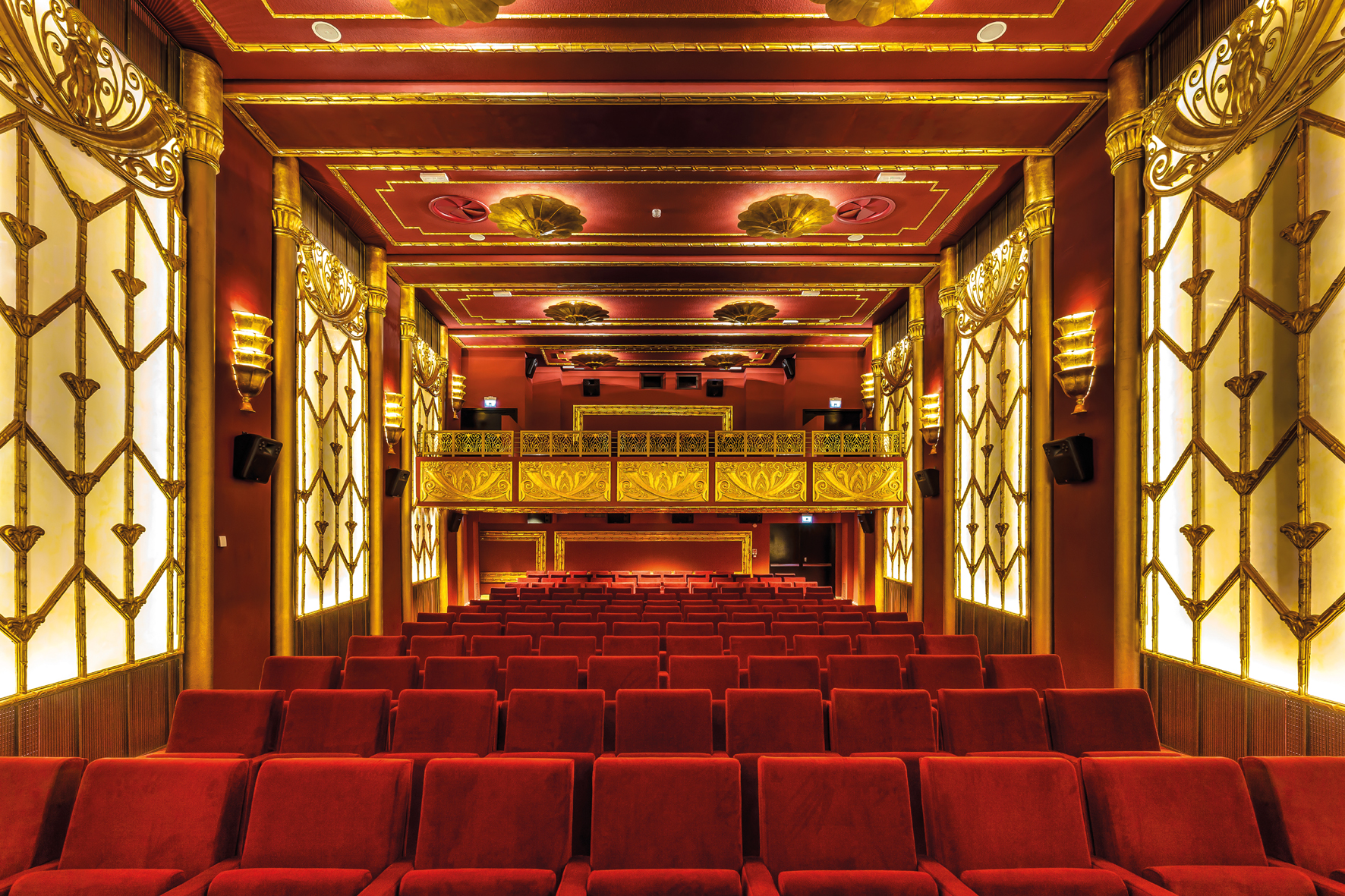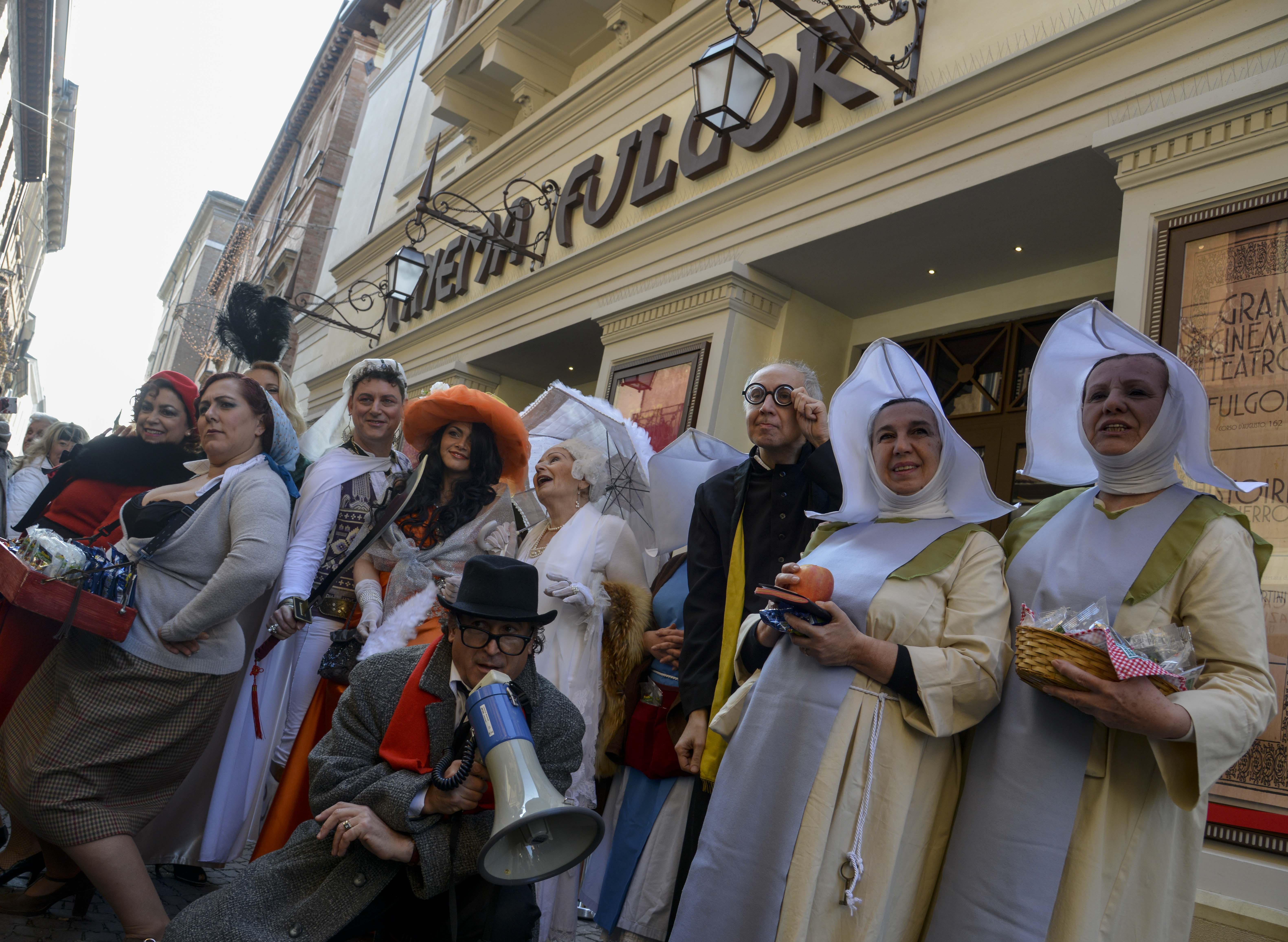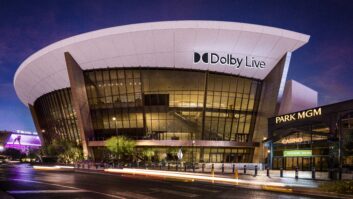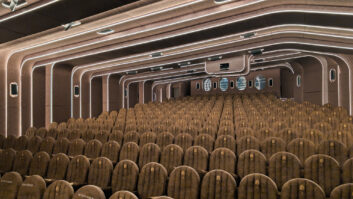
It was in the Fulgor cinema of his hometown of Rimini that world-famous film director Federico Fellini (1920-93) discovered the magic of cinema – watching the 1926 silent film Maciste all’inferno on his grandfather’s knees. Later, he earned pocket money drawing caricatures of the actors and actresses to publicise the films screened at the cinema.
Originally an 18th century building owned by local nobles the Valloni brothers, and converted into a cinema in 1914, the Fulgor left such an indelible impression on Fellini that he featured it in his 1973 film Amarcord (with a replica built at Cinecittà Studios).
After lengthy restoration work, the ‘new’ Fulgor was recently inaugurated on what would have been Fellini’s 98th birthday, as part of the project for a Fellini Museum. It features a main room designed by triple Oscar-winning production designer Dante Ferretti.
Participants at the inauguration ceremony included Italy’s Minister for Cultural Heritage and Tourism Dario Franceschini, Ferretti, Rimini’s mayor, Fellini’s niece, a group of characters from some of the ‘maestro’s’ best-known films and even a double of the man himself, complete with his familiar hat, megaphone and red scarf.
Both the Ferretti-designed 192-seat main ‘Federico’ room and the 52-seat ‘Giulietta’ room (named after Fellini’s wife, film actress Giulietta Masini) are equipped with a Sony digital 4K projector (with on-board servers, integrated media blocks and touchpanel monitors), a Harkness screen and a sound system by LW Speakers with Dolby sound processing.

Specialist company Linea Gobbato, responsible for the installation of the rooms’ projection and audio systems, was supported by Milan digital cinema specialists Paolo Veronese, distributor of speakers and amplifiers from LW Speakers. This Madrid-based cinema and home theatre speaker manufacturer takes its name from the initials of founder Luis Wassmann, a cinema technology specialist since the early 1980s.
Mirko Gobbato, one of the company’s three partners, describes the hardware deployed: “The loudspeaker enclosures are the company’s Sound Experience models throughout and both rooms feature three screen speakers (left, centre and right) a subwoofer and surround speakers – 10 identical enclosures in the small room, 12 larger side speakers in the main room plus four more compact rear under-balcony speakers, where the ceiling is lower. Power amps are identical, with two installed in the small room and three in the Federico room and are able to provide 4 x 1,000W on 2 and 4 ohms and 4 x 520W on 8 ohms.”
Back in time
Regarding his work on designing the Federico room (for which the red velvet, stucco and marble décor was created by Rome’s Studio Forme, an artistic workshop combining fine art skills and multimedia techniques), Ferretti, who worked with Fellini on five of his films, explains: “My ties with the city of Rimini are due to having worked with Federico, and I’m from the Marches, the next region down the Adriatic coast from Rimini. I designed the main room with the intent of creating an atmosphere that takes audiences back in time – as if they were in a ’30s or ’40s-style movie theatre.”
Gobbato continues: “Since there was an invitation to tender for the overall project, the architects who won the contract didn’t leave much choice as to where the loudspeakers were to be positioned, so there was not much that could be changed. However, we managed to successfully solve the problems caused from an acoustic point of view by the large amount of glazing in the main room with some fine-tuning work on the frequencies and making certain to avoid excessive volume.”

After commenting at the inauguration that the reborn Fulgor was so fantastic that it was almost a shame to turn down the lights to watch the films being screened, Franceschini announced the allocation of a further €3million as a contribution to the realisation of the museum project, already financed with €9million by the government, and concluded: “The Fulgor is a symbolic place for all of us and the first step in the creation of a Fellini Museum.”
The Fulgor’s film calendar is managed by Khairos, a Rimini company that has run cinemas for half a century and includes a breakfast-plus-film format on Sunday mornings and a series of special screenings of Amarcord (“I remember” in Rimini’s local dialect).
Following the inauguration, The New York Times included the Fulgor in its list of ‘52 Places to Go in 2018’.







